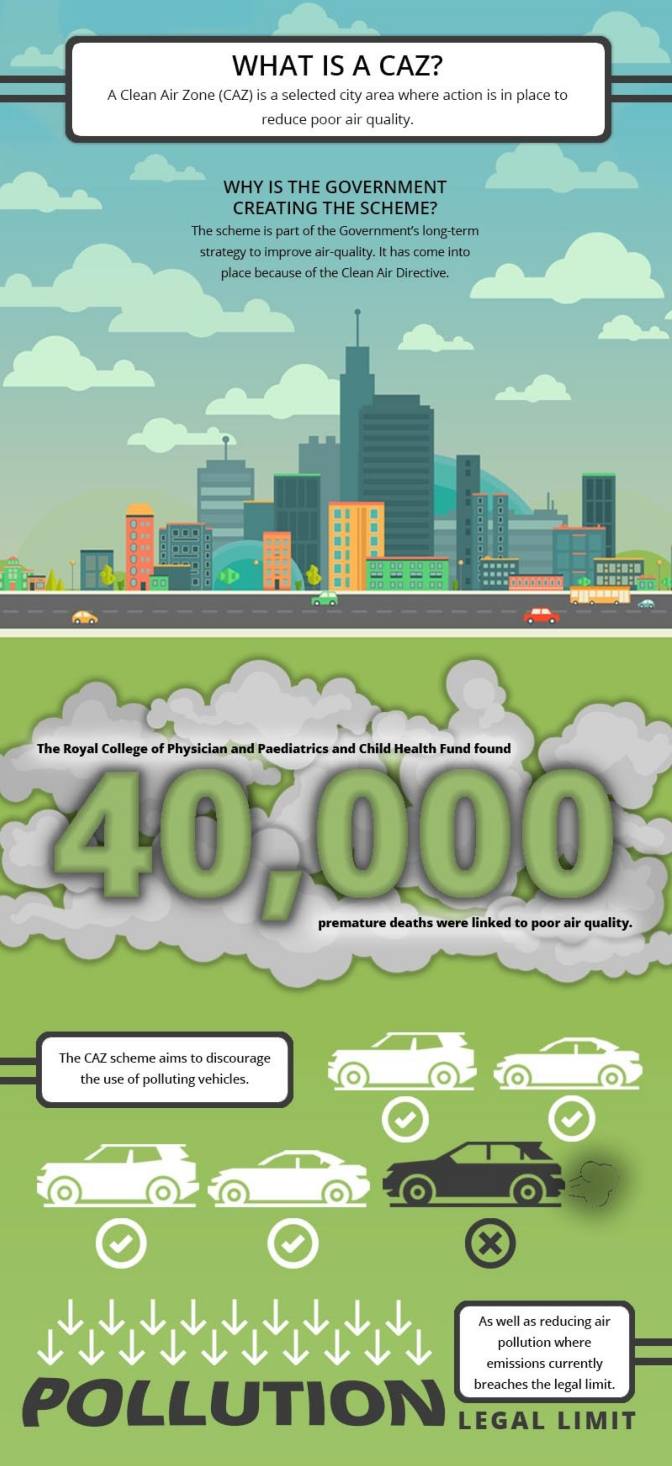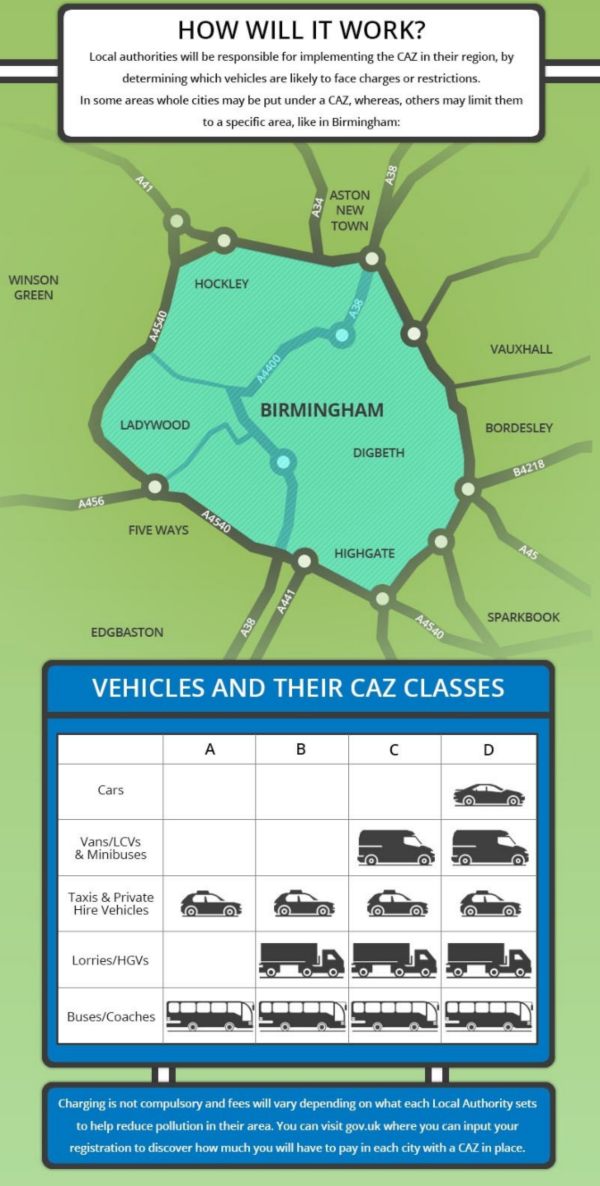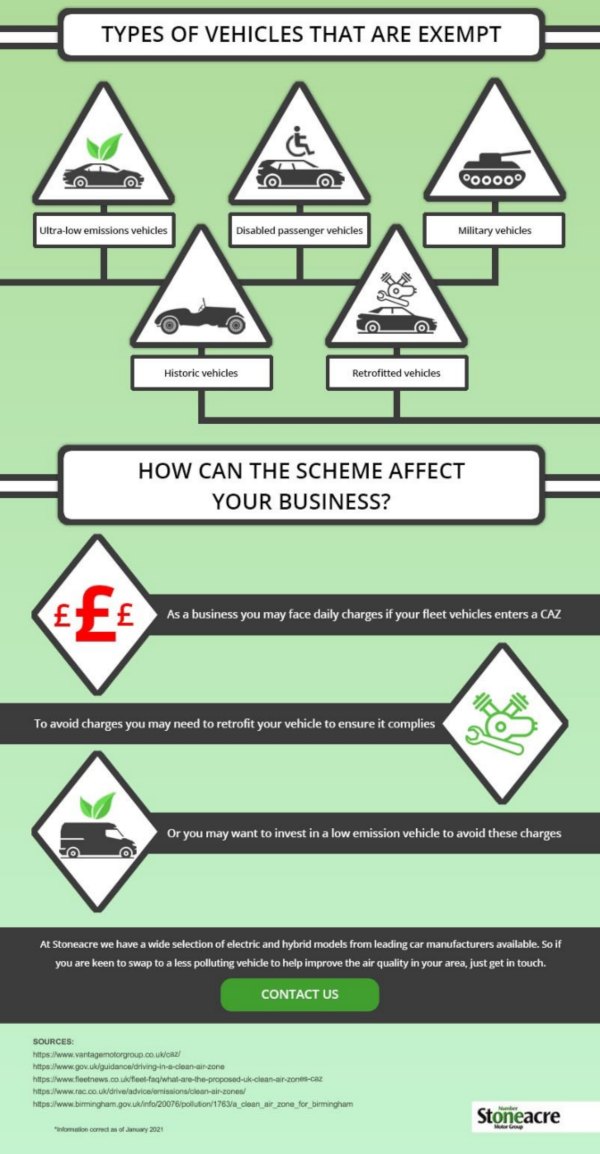Following in the footsteps of London, many councils have decided to introduce a Clean Air Zone scheme to their cities to better the quality of air around us.
Due to the coronavirus, the scheme was halted but will be taking effect this year, in numerous cities across the UK.
Clean Air Zones Live Now
- Bath
- Birmingham
- London
- Portsmouth
- Oxford
- Bradford
- Bristol
- Newcastle
- Sheffield – (This is a class C chargeable zone for the most polluting heavy goods vehicles (HGVs), light goods vehicles (LGVs), vans, buses, coaches and taxis that drive within the inner ring road and city centre. Private cars and motorbikes will not be charged)
- Glasgow – (1 June 2024 for residents within the zone)
Clean Air Zones Coming Soon
- Manchester – Was paused in 2022 and still under review
- Dundee – (Low Emission Zone Introduced but will not go into full effect until the 30th May 2024)
- Aberdeen (Low Emission Zone Introduced but will not go into full effect until the 1st June 2024)
- Edinburgh (Low Emission Zone Introduced but will not go into full effect until the 1st June 2024)
The general rule is that to travel within a Clean Air Zone without a charge, your vehicle has to be at least a Euro 4 emission standard compliant petrol model – in other words, registered after January 2006 – or, if it is a diesel, compliant with Euro 6 standards (registered after September 2015). If your vehicle meets these standards, in all probability you will not have to pay a charge.
To help understand how this scheme may affect you, Stoneacre has broken down the variables of CAZ.



We are happy to assist you along the way if you have any questions. If you were even thinking of changing your car for a lower emissions vehicle, we have created a simple free car valuation service to help give you an idea of how much you could receive in your part exchange.




